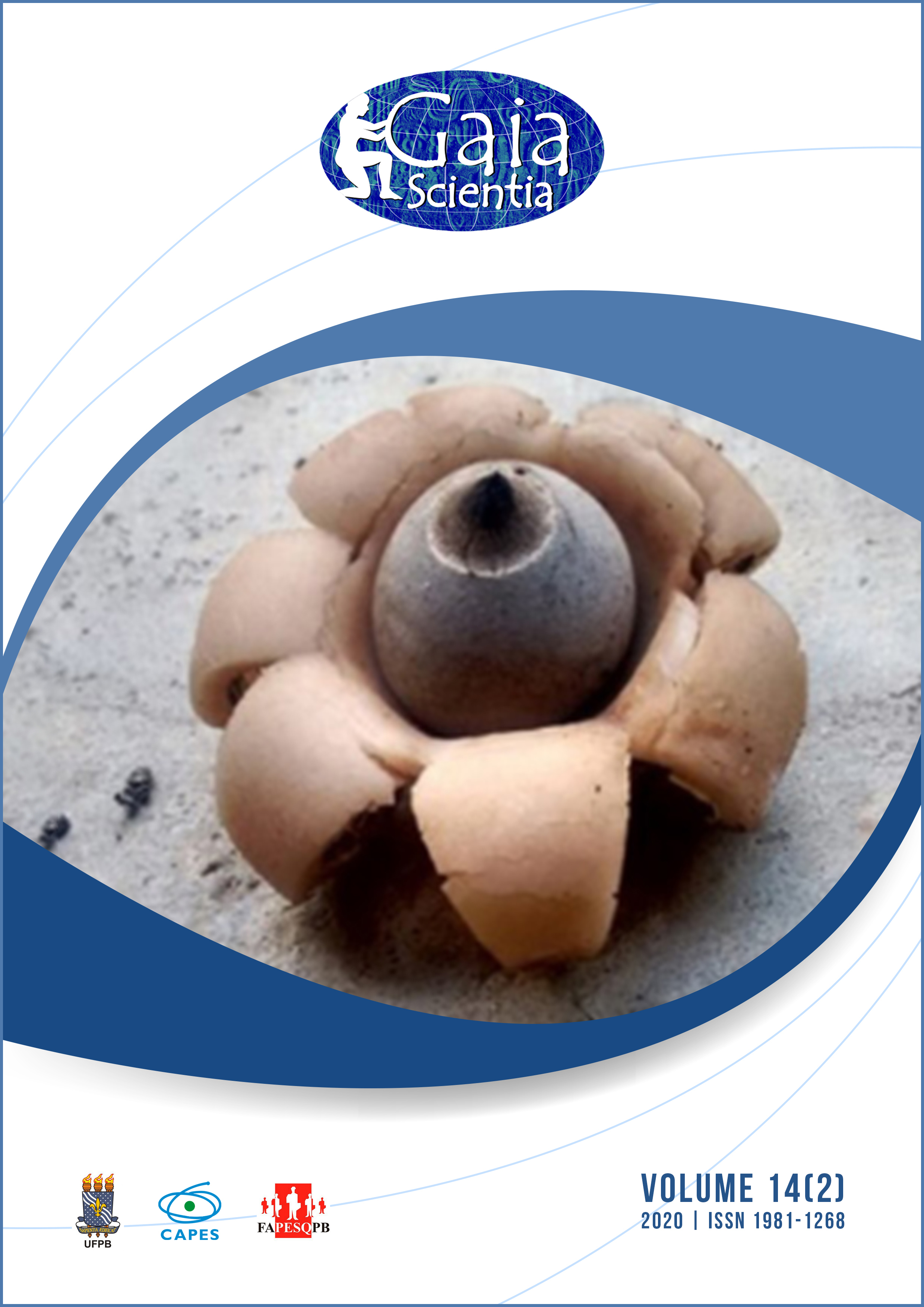Potencial de adsorção do nanocompósito híbrido de grafeno magnético para remoção de herbicida diuron
DOI:
https://doi.org/10.22478/ufpb.1981-1268.2020v14n2.50120Resumo
Dentre os processos para remover contaminantes da água, a adsorção se distingue como uma tecnologia de remediação superior. O grafeno vem se destacando como material adsorvente devido às suas propriedades únicas. Este estudo foi realizado utilizando um nanocompósito magnético híbrido de grafeno e ferrita de manganês (NCGM) para o tratamento de água contaminada com herbicida diuron, desenvolvendo possíveis processos alternativos de tratamento de água e efluentes. O potencial de adsorção do adsorvente foi avaliado em ensaios batelada. Foram realizados estudos cinéticos, sendo as isotermas de adsorção também estudadas. Os resultados mostraram que o grafeno apresentou uma capacidade máxima de adsorção 7,9 mg g-1 para a temperatura de 45 ºC após 4 h de tempo de contato. Os resultados da cinética de adsorção ajustaram-se ao modelo de pseudo-segunda ordem, indicando um processo químico envolvido. O modelo de Freundlich foi melhor para os ajustes dos dados obtidos para as isotermas de adsorção, indicando um processo de adsorção heterogêneo e multicamadas. O processo se mostrou endotérmico, sendo favorecido pelo aumento de temperatura. Portanto, concluiu-se que o NCGM apresentou-se como um potencial material adsorvente para tratamento de águas contaminadas com diuron.










